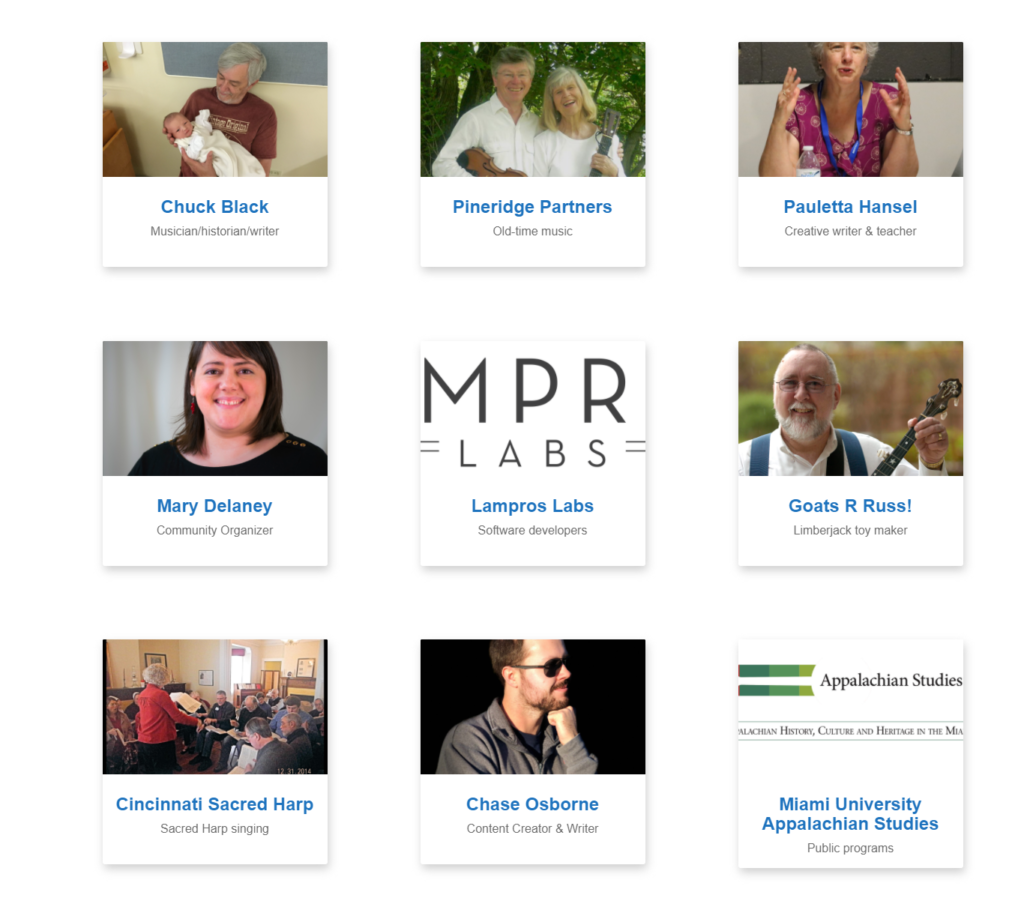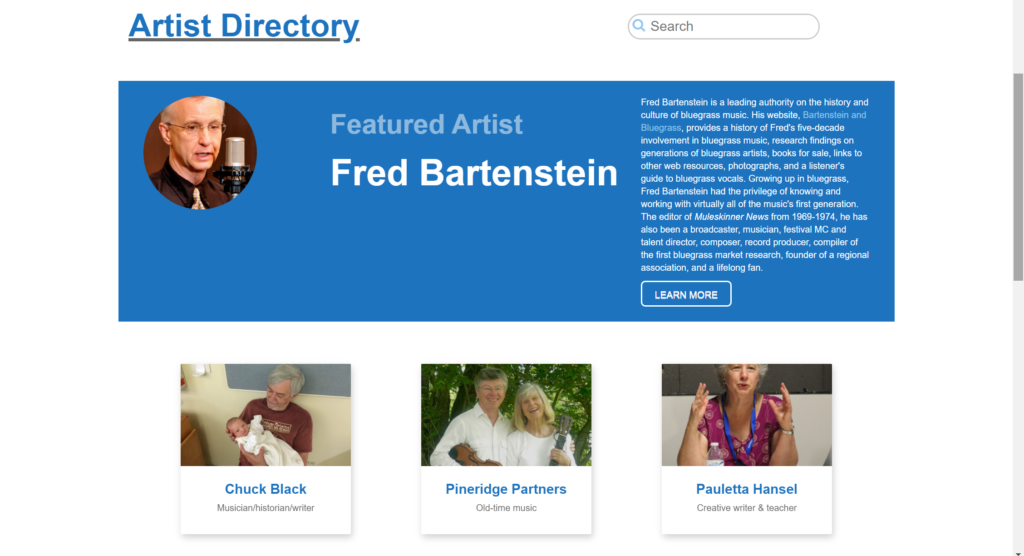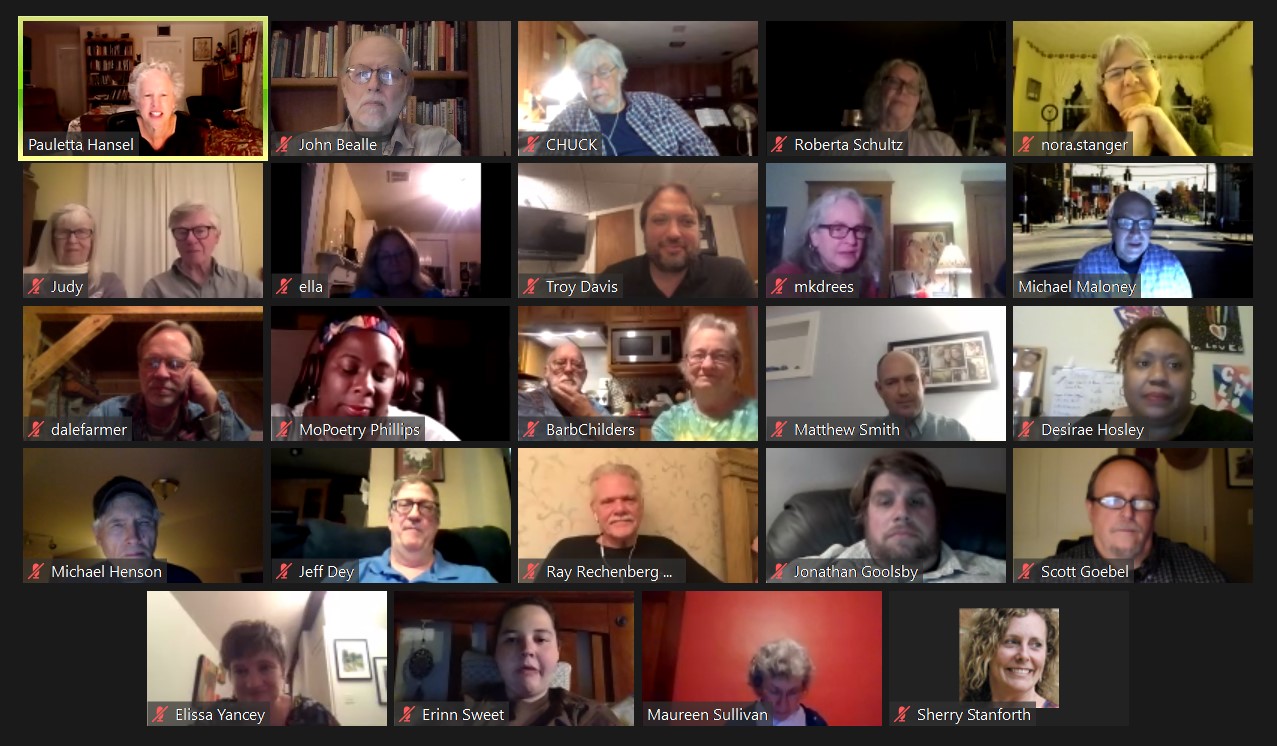Over the last several months I have had the opportunity to interview local urban Appalachian writers, scholars, artists, and other creative people who have registered in the Urban Appalachian Community Coalition’s Cultural Resource Directory. The Cultural Resource Directory serves as a central place where urban Appalachian cultural providers can make contact with the greater Cincinnati community and the community can find urban Appalachian cultural providers. The CRD continues to expand, with new people and groups signing on all the time using this link.
One of the most striking things about the people on the CRD is the incredible range of things that is going on in the urban Appalachian communities. While we do have plenty of bluegrass musicians and banjo players, as anyone might expect, there is much more to urban Appalachian cultural life than bluegrass and this is perhaps one of the reasons for the existence of this resource: to make it known that urban Appalachian culture is literally everywhere.

With the ongoing battle against narrow and dangerous stereotypes associated with Appalachian people and culture, perhaps of most importance are the ways the people on the CRD represent forms of Appalachian cultural life that flout these stereotypes. The Miami University Regionals program in Appalachian Studies comes to mind here. Bringing a combination of academic rigor and community engagement reveals and promotes the ways Appalachians have enriched the cultural life of our region of the country. Urban Appalachians have redefined life in southwest Ohio with the banjo and the fiddle, and they have redefined life in this region with the sweat of their brows and the power of their minds and imaginations. Miami University Regionals Appalachian Studies makes these facts more visible and brings everyone into the conversation on Appalachian history and culture.
Contributors to the life of the mind and the imagination are equally represented in the CRD. We have scholars of music history, poets, and people who bring Appalachia into the digital realms. These people and their work are part of the living dialogue between urban Appalachians and the rest of the country—indeed, the world. The recent post on Moneeca “MoPoetry” Phillips demonstrates the ways one woman has been able to inspire and empower with poetry that has some very material impact. Working with incarcerated young women and finding the ways that spoken word poetry connects people are exemplary of how urban Appalachians continue to define our communities.
The Cultural Resource Directory also places side by side those people who have been at the core of urban Appalachian culture and activism with new and young voices who are taking Appalachian culture into new contexts. Simply scroll through and you find people like Richard Hague, someone who has been writing about Appalachia for decades, and Jordan Hackworth, a young urban Appalachian whose online magazine brings Appalachian literature, art, and history into contact with digital formats. That thread that runs from the most traditional literary forms to the newest digital expressions of Appalachian culture and life is extended even as it is further strengthened.

Still, we do have our banjo players and other musicians. But here again, the traditional and the new coexist on our Cultural Resource Directory. While the Carter Bridge Bluegrass Band stays close to tradition with acoustic instruments, old-time harmonies, and traditional mountain songs, the Red Idle Rejects kick things up a bit with electric guitars and songs about contemporary issues. Those old songs sing of the mountains and coal mines, while the new songs sing of missing the mountains the dark legacy of the coal mines.
The CRD also offers contact with those who document the artistic and musical traditions of Appalachia. Bluegrass historians like Fred Bartenstein have turned bluegrass into an academic discipline, one that takes its place next to any other musical form, and this goes a long way toward shutting off the quaint regionalism that bluegrass tends to get lodged into and renders the Appalachian experience an American experience. With this, I suppose I have come full circle with the Appalachian Studies Program at Miami University Regionals.
What has emerged through the Cultural Resource Directory are multiple ways the urban Appalachian artists, writers, scholars, and activists in and around greater Cincinnati are threaded through all of the cultural life of southwestern Ohio. While the CRD is a site where people can get the word out about what they do, it is also a document of the ways urban Appalachians continue to play a vital role in the cultural life of our region of the country. The Urban Appalachian Community Coalition maintains the Cultural Resource Directory as one feature among many whereby people can connect with urban Appalachian artists, scholars, and activists. If you are a Cincinnati area cultural provider with ties to Appalachia, you can sign up for the Cultural Resource Directory on this link: https://uacvoice.org/signup/.
The view full CRD can be found at this link: https://uacvoice.org/directory/.
Mike Templeton is a writer, independent scholar, barista, cook, guitar player, and accidental jack-of-all-trades. Check out his profile in UACC’s new Cultural Directory. He lives in downtown Cincinnati with his wife who is a talented photographer. They spend their free time walking around the city snapping photos. She looks up at that the grandeur of the city, while Mike always seems to be staring at the ground.

